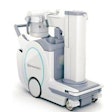
The challenge of continuously improving in radiology is more important than ever, as patients increasingly look to providers for a positive experience. Knowing how to recognize, evaluate, and implement change to meet their needs is key, according to a presentation at the AHRA 2022 meeting in Phoenix.
 Mark Lerner.
Mark Lerner.Mark Lerner, a healthcare recruiter with PSI Recruiters in Washington, DC, broke down the process of continuous improvement for AHRA attendees into small tangible tasks, and said implementing them offers a competitive edge.
"The healthcare industry has recognized that physicians and patients have a choice of where they go for care. How does your facility become more desirable than the others?" he said.
Lerner opened with an example of what can go wrong without a solid quality improvement process in place. On May 13, 2022, RaDonda Vaught, 38, a former Tennessee nurse, was found guilty of criminally negligent homicide in the death of a patient to whom she accidentally gave the wrong medication.
Vaught injected the paralyzing drug vecuronium into 75-year-old Charlene Murphey instead of the sedative Versed on December 26, 2017. Vaught freely admitted to making several errors with the medication that day.
"Her defense attorney argued the nurse was not acting outside of the norm and systemic problems at Vanderbilt University Medical Center were at least partly to blame for the error," Lerner said.
Continuous quality improvement is an incremental process, and a good start is to take a page out of W. Edwards Deming's book, Lerner said. Deming was a statistician who developed a theory of statistical control. He brought statistical control to Japan in the 1950s with great success. The Deming prize for "lean" management became an annual award in Japan, with the Baldridge Award in the U.S. modeled after it.
"In philosophy people say all theory goes back to Plato and Aristotle. In management theory, all goes back to Deming," Lerner said.
Lerner offered a "win-win" approach based on Deming's lean management theory for reducing waste and increasing process speed with a rating model called Six Sigma, which indicates the percentage of defect-free products created by a process. A Six Sigma process is one in which 99.996% of all production opportunities are expected to be free of defects.
A "lean Six Sigma methodology" can be implemented by focusing on and characterizing the following five start-to-finish steps:
- Define: Who are the customers? What are their priorities?
- Measure: How is the process performing and how is it measured?
- Analyze: What are the most important causes of the defects?
- Improve: How do we remove the causes of the defects?
- Control: How can we maintain the improvements?
Importantly, data and process analysis tools should be utilized at each step along the way, Lerner said. Such tools include value stream mapping, which allows you to visualize, analyze and improve all the steps.
Trend charts can be handy for evaluating "no shows," for instance, while pareto chart-bar charts can be used to assess late arrivals by reported causes. Other useful tools include scatter diagrams, histograms, and statistical control charts.
Ultimately, understanding the need for continuous quality improvement is only part of the answer. Implementation is the differentiator, Lerner said. Keys to success for quality improvement include starting with a sound and well understood plan, understanding individual roles and responsibilities, getting the right people "on the bus," ongoing review, and forward thinking.
"Perfection is our objective. It takes many improvement cycles to get there, but that's our target," he concluded.




















